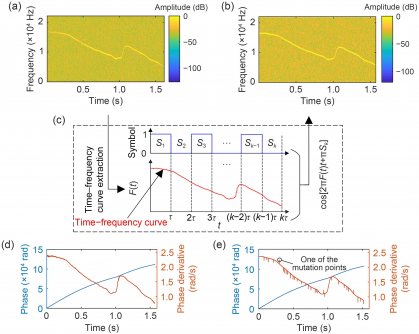BREAKING NEWS: Researchers have just announced a groundbreaking method for recognizing underwater communication signals that mimic dolphin whistles. This innovation, developed by a team from Tianjin University and the Shenyang Institute of Automation, addresses significant challenges in maritime military communications and could redefine underwater acoustic technology.
The urgency of this development stems from the rising need for covert communication methods in military operations. Current systems face severe limitations when distinguishing between artificial signals and natural underwater sounds. Underwater Bionic Camouflage Covert Communication (UBCCC) signals, designed to mimic marine mammal calls, often confuse traditional recognition methods, leading to misclassification as background noise.
By utilizing a convolutional neural network (CNN), the new method enhances recognition efficiency and accuracy. The research team outlined three critical steps to achieve this:
1. **Spatial Diversity Combining (SDC)**: This technique mitigates signal fading caused by multipath propagation in underwater channels. By combining signals from multiple hydrophones, SDC enhances the main signal while suppressing interference, providing a solid foundation for subsequent analysis.
2. **Time-Frequency Spectrum (TFS) Mask Filtering**: The researchers developed a sophisticated filtering method that extracts whistle signals from noisy environments. Using short-time Fourier transforms, they treat TFS as a 2D image, applying various filtering techniques to isolate time-frequency contours (TFCs). This process results in a TFS mask that precisely extracts the desired whistle signals.
3. **Phase Derivative Spectrum and CNN Recognition**: The team utilizes the Hilbert transform to analyze the extracted whistle signal’s phase and calculate its derivative. They create a phase derivative scalogram image, which feeds into the CNN for effective signal recognition. This innovative approach capitalizes on unique mutation points at symbol connections, distinguishing these signals from continuous phase changes common in dolphin whistles.
Validation of this method yielded impressive results. In numerical simulations, the system achieved an accuracy of 90% under multipath channels at a signal-to-noise ratio (SNR) of 0 dB. In practical lake experiments conducted at Qingnian Lake in Tianjin, 81% recognition accuracy was noted over a distance of 150 m with an SNR of 6.36 dB. This performance, albeit slightly lower than simulations due to environmental factors, confirms the method’s potential.
The full study, titled “Recognition method for underwater communication signals that mimic dolphin whistles using phase-shifting modulation,” authored by Qingwang YAO, Jiajia JIANG, Xiaolong YU, Zhuochen LI, Xiaozong HOU, Xiao FU, and Fajie DUAN, is available for open access. Researchers and military experts worldwide will undoubtedly monitor these developments closely as they could shape the future of underwater communication.
As maritime security demands evolve, this advanced recognition technique emerges as a vital tool for ensuring effective communication in challenging acoustic environments. Stay tuned for more updates on this critical innovation that could redefine underwater operations.







